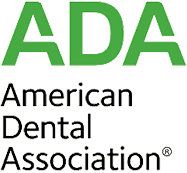Periodontal Treatments – South Burlington, VT
Periodontal disease treatment generally involves three main steps:
The following is an overview of the components of each treatment step.
STEP ONE: Non-Surgical Treatment
The first step of treatment is to eliminate all the known causes of the periodontal disease. Mouth bacteria found in saliva forms colonies on the teeth and tissues, which is called plaque. This clear film of bacteria is the primary cause of periodontal inflammation and breakdown. Calculus (also known as tartar) is formed when salts from the saliva precipitate into the plaque. This forms a hard substance, which adheres tightly to the tooth, similar to barnacles on a boat's hull.
Both the calculus and the plaque must be removed to achieve a successful result. The patient is taught to remove the plaque, while the dental professional must remove the calculus. Non-Surgical Treatment also includes creating an environment that makes plaque removal by the patient as easy as possible. The following outline lists factors that may be addressed during Non-Surgical Treatment.
- Demonstration of proper oral hygiene procedures to remove surface plaque
- Scaling and root planing to remove calculus and deep plaque
- Smoothing or replacement of fillings that do not fit well and thus retain plaque
- Removal of hopeless teeth that may jeopardize good teeth
- Adjustment of bite, occlusal equilibration, if needed
- Minor orthodontics to better align teeth
Following Non-Surgical Treatment, the tissues are re-evaluated after they have a chance to heal to determine if more periodontal therapy is needed. If the disease has been arrested, the optimal periodontal maintenance (cleaning) schedule is determined for the patient. If the disease persists, further non-surgical treatment may be performed. If surgery is needed to further reduce pockets that persist, a surgical treatment plan is formulated.
STEP TWO: Surgical and Regeneration Treatment
Non-Surgical Treatment generally produces shrinkage of the inflamed gum, and thus a reduction of the pocket depth. Often, if the patient has excellent oral hygiene habits and keeps regular maintenance appointments, this is enough to stabilize a case. However, with pockets that continue to bleed when probed, there is a probability the disease process will continue. In those cases, further reduction of the remaining pockets is the best treatment.
There are three primary surgical procedures that may be used to reduce or eliminate pockets that remain after Non-Surgical Treatment. (Click any heading for a more detailed discussion and clinical examples.)
- Regeneration Surgery - Ideally, periodontal therapy would regenerate bone and tissue back to its original form. While this is not always possible, new techniques are allowing for more predictable regeneration of tissues.
- Gingivectomy - Trimming excess tissue when the bone contour has not been altered.
- Flap Surgery - The most common surgical procedure, which gives the periodontist access to the jawbone. In most advanced periodontal cases, the bone has been altered by infection and smoothing irregularities is needed.
The goal of periodontal surgery is to give the periodontist access for treatment, and to reduce pocket depth. The ideal surgical result is pocket elimination, giving the patient the ability to remove plaque from the sulcus daily.
In some cases the pockets are so deep that complete elimination is not possible, and some depth remains even after surgery. Some of these teeth may be considered questionable, and their long-term prognosis guarded. However, as long as these teeth do not jeopardize the surrounding dentition, are functional, and do not cause discomfort, they are maintained.
Many questionable teeth are kept for years, if the patient is able to perform a high level of oral hygiene and stay on a good maintenance program.
Back to Top
STEP THREE: Periodontal Maintenance
The two most important factors in determining long-term success are patient home care and regular periodontal maintenance (cleanings). It has been shown that without routine maintenance there is a 20-fold increase in the chance of recurrent disease. Most patients who are susceptible to periodontal disease must be seen for periodontal maintenance appointments every three months, rather than the typical twice yearly cleanings. Often, maintenance appointments are alternated between the general dentist and the periodontist.
There is nothing a patient can do that is more important to maintaining a healthy mouth than daily flossing and brushing along with consistent periodontal maintenance. Many dental insurance companies now recognize the importance of four hygiene visits per year and are now covering them.


